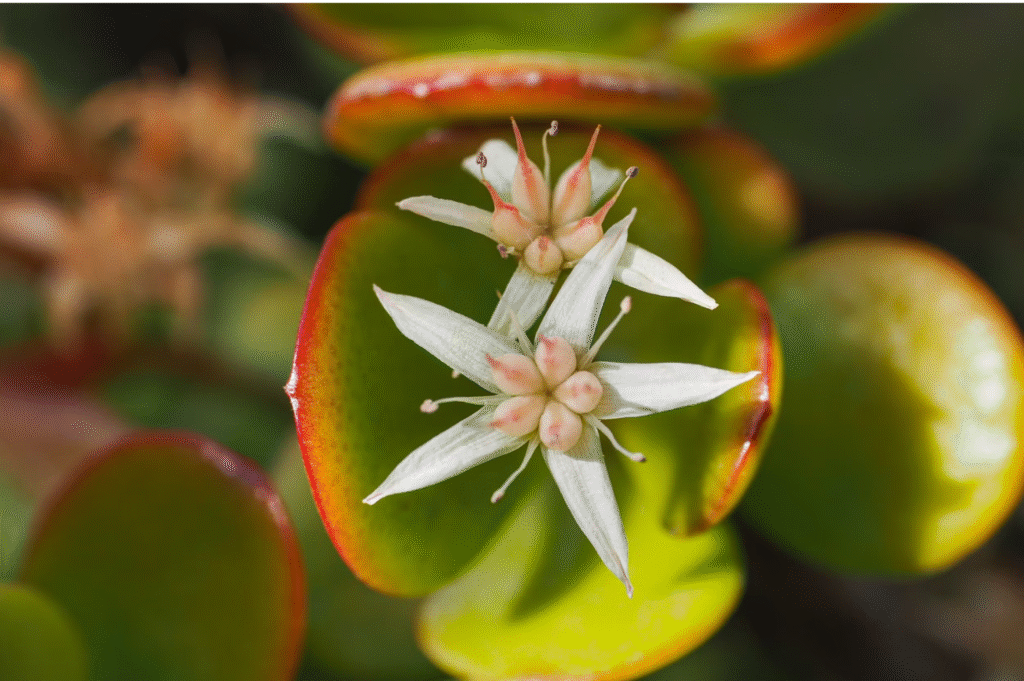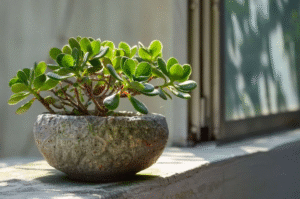The jade plant (Crassula ovata) is a popular indoor succulent known for its thick, glossy leaves and reputation as a symbol of wealth and prosperity. But what many plant lovers don’t know is that jade plants can produce beautiful, star-shaped pink or white blooms, if you treat them just right.
If you’ve been wondering how to make your jade plant bloom, you’re in the right place. As a product review-style plant expert, I’ve spent a good amount of time testing the best growing conditions, watering schedules, and seasonal triggers to help jade plants thrive and finally, flower indoors.
Let’s dive into the exact steps you need to follow to encourage your jade plant to bloom, even if you’re growing it on a windowsill or balcony.
Why Doesn’t Every Jade Plant Bloom?
Most jade plants rarely bloom indoors, and that’s not because they’re unhealthy. It’s usually because they don’t receive the natural stress triggers that would signal the plant it’s time to flower. In the wild, jade plants bloom in winter, following a period of drought and cooler temperatures. Reproducing these conditions indoors is the secret.
What Does a Blooming Jade Plant Look Like?
When it blooms, a jade plant produces clusters of tiny, star-shaped flowers (usually white or pale pink) that grow at the tips of the branches. The blooms are delicate, slightly fragrant, and can transform your jade into a true showpiece.
But how do you get there?
1. Mature Plant = Better Chance of Flowering
Jade plants typically need to be at least 3 to 5 years old before they are mature enough to bloom.
If your jade plant is still small or young, it may not have the energy reserves to produce flowers. Focus on giving it strong foundational care until it’s older.
2. Expose It to Full Sunlight
Light is a key factor in blooming. Place your jade plant in a south-facing window where it can receive at least 4–6 hours of bright, direct sunlight daily. Insufficient light is the most common reason jade plants stay green but never bloom.
Sunlight Tip: If natural light is weak in winter, supplement with a grow light designed for succulents. Look for full-spectrum LEDs with at least 10,000 lux.
3. Cooler Nights in Winter Trigger Blooms
To encourage flowering, jade plants need a distinct drop in nighttime temperatures, similar to their native environment in South Africa.
Blooming Hack: In late fall or early winter, move your jade plant to a cool room that stays around 50–55°F (10–13°C) at night. Keep the plant in this environment for at least 4–6 weeks.
The cool nights combined with shorter daylight hours signal the plant to enter its blooming phase.
4. Withhold Watering Before Winter
Jade plants don’t need frequent watering, and when it comes to blooming, a little stress is actually helpful.
Watering Strategy:
- In fall, reduce watering gradually.
- Allow the soil to dry out completely between waterings.
- Avoid fertilizing in this period.
By slightly stressing the plant with less water and cooler temps, you mimic its natural drought cycle and nudge it toward producing flowers.
5. Use a Well-Draining Soil Mix
Poor soil can prevent blooming by causing root rot or restricting root growth. Always plant jade in a succulent or cactus mix that drains quickly.
Recommended Soil Mix:
- 2 parts cactus potting mix
- 1 part perlite or pumice
- Optional: Add a small amount of coarse sand for better drainage
Repot your plant every 2–3 years to refresh the soil and keep the roots healthy.
6. Don’t Over-Fertilize
Fertilizing is important, but too much nitrogen can lead to leafy growth instead of flowers.
Best Fertilizer for Blooming:
Use a low-nitrogen, high-phosphorus fertilizer in the spring and summer. Look for an NPK ratio like 2-7-7 or 5-10-10. Stop fertilizing entirely in fall and winter.
Feed only once a month during the active growing season.
7. Prune Strategically (But Not Too Much)
Light pruning can encourage branching and bushier growth, which creates more potential sites for flowering.
Pruning Tips:
- Prune in spring after the growing season begins.
- Avoid heavy pruning in fall or winter, as it may delay blooming.
- Always use sterilized tools to prevent infections.
8. Keep It Rootbound (Within Reason)
Jade plants that are slightly rootbound tend to bloom more. The slight stress from limited root space can encourage flowering.
Potting Tip: Choose a pot that’s only 1 inch larger than the current root ball. Avoid constant up-potting.
But if your plant is extremely pot-bound and growth is stunted, repot in early spring with fresh soil.
9. Be Patient (Bloom’s Take Time)
Even with perfect care, jade plants may only bloom once a year, typically in late winter. Don’t be discouraged if it doesn’t happen immediately. It often takes a full seasonal cycle for results to show.
Signs Your Jade Plant Is Getting Ready to Bloom
- Thicker stem growth
- More compact new leaves
- Bud formation at branch tips
- Reduced leaf production
These signs are all good indicators that flowers may soon follow.
Final Thoughts: Is Blooming Worth the Effort?
Absolutely. While jade plants are stunning even without flowers, watching one bloom is a rare and rewarding experience for any plant enthusiast. With the right combination of age, light, temperature, water control, and patience, your jade plant can reward you with gorgeous winter blooms that brighten up the dullest months.






